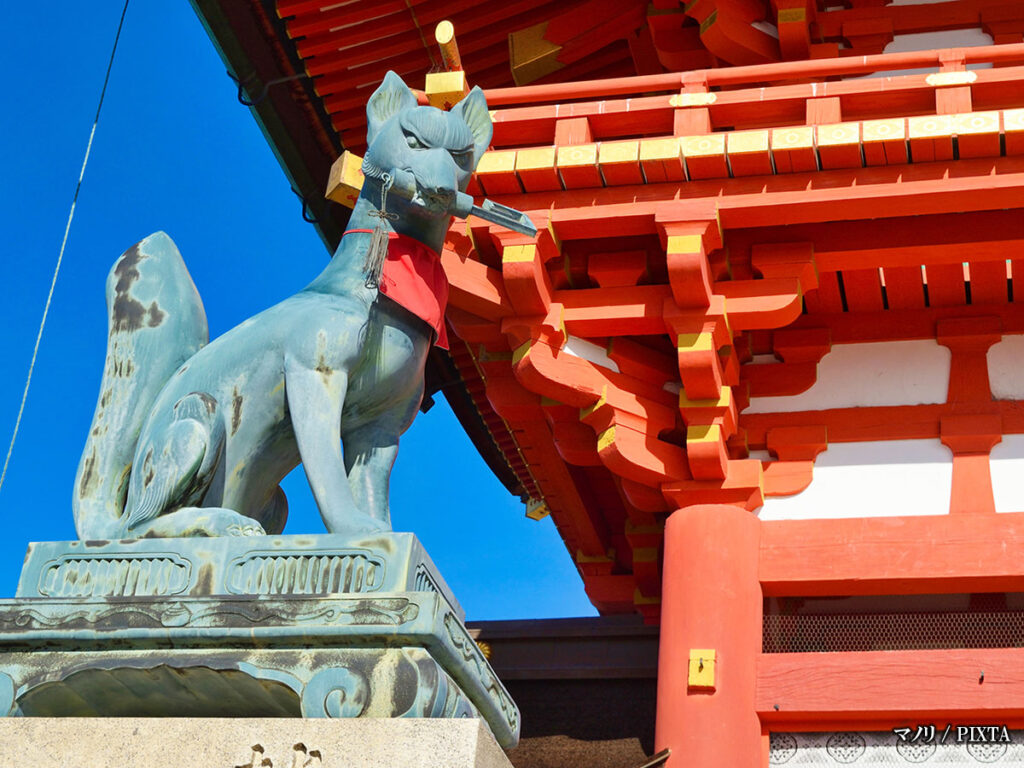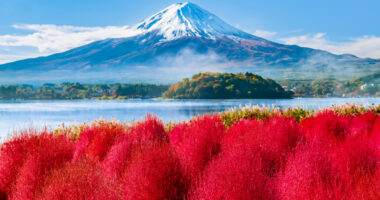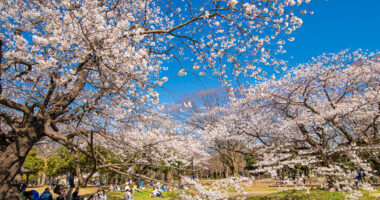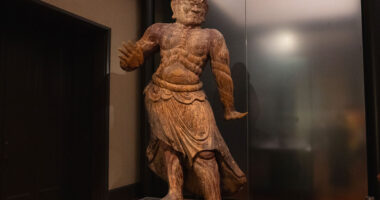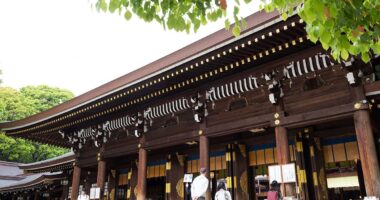Fushimi Inari Taisha in Kyoto is known around the world for its breathtaking Senbon Torii—thousands of vermilion gates lining the forested trails of Mount Inari. But beyond the iconic photos lies a world rich in cultural symbolism and centuries-old spiritual traditions. From mysterious fox statues to charming fortune slips, the shrine offers a fascinating glimpse into the spiritual life of Japan. Whether you’re a first-time visitor or returning to deepen your understanding, this guide will walk you through the essential rituals and symbols you’ll encounter—and how to participate respectfully.
Kitsune statues: the foxes of Inari
Who are the foxes?
As you explore the shrine grounds, one of the first things you’ll notice is numerous statues of foxes—kitsune in Japanese. These are not just decorative figures; kitsune are believed to be the messengers of Inari Ōkami, the deity of rice, agriculture, and prosperity. Inari is one of the most important Shinto gods, and foxes serve as sacred intermediaries between the divine and the human world.
Unlike the cunning or mischievous foxes of Western folklore, Inari’s kitsune are considered wise and benevolent protectors. Their statues are typically white, symbolizing purity, and are often positioned in pairs, standing guard at shrine entrances or flanking smaller altars along the trail.
What are they holding?
A closer look reveals that many fox statues carry symbolic objects in their mouths or beneath their paws:
- Keys: These represent the keys to the rice granaries, a source of life and prosperity.
- Scrolls: Indicative of wisdom and divine messages.
- Jewels or balls: Symbols of spirit and power.
- Rice sheaves: Reinforcing the connection to agriculture and fertility.
These attributes reflect Inari’s many blessings—not only agricultural bounty but also business success, safe travels, and general good fortune.
Related article:
To learn more about this important shrine, read our article, “Fushimi Inari Taisha: Exploring the Spiritual Heart of Kyoto.”
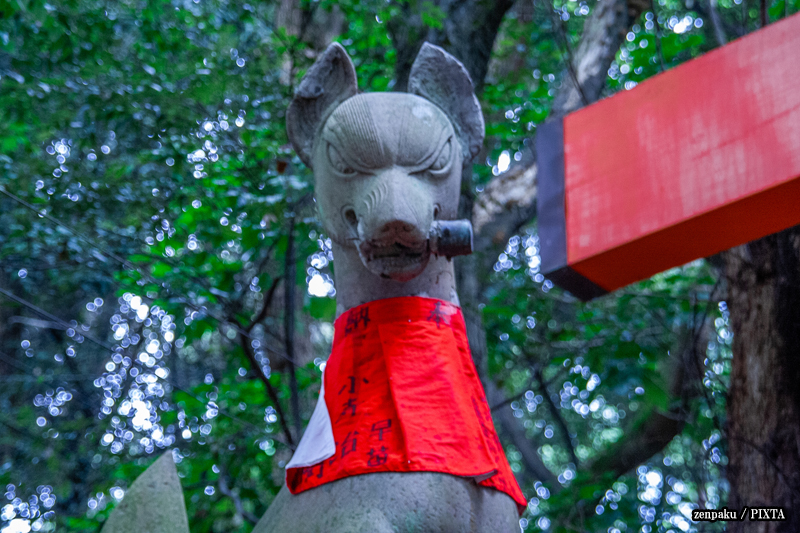
Photo for illustrative purposes
Where to see the most impressive kitsune
While kitsune statues are scattered throughout the shrine complex, notable clusters can be found:
- At the base of the honden (main shrine): Often flanking the entrance or within nearby auxiliary shrines.
- Okusha Hōhaisho (Inner Shrine): A spiritual spot deep into the complex where kitsune statues line the prayer areas.
- Smaller sub-shrines along the trails: Many of these offer a quieter, more atmospheric encounter with fox statues, often worn smooth by time and moss.
Ema: writing your wishes on a fox’s face
What are ema?
Ema are wooden votive plaques on which visitors write prayers or wishes. At most Shinto shrines in Japan, these are rectangular in shape and feature a picture of a horse, deity, or symbolic motif. However, Fushimi Inari offers something truly unique: fox-shaped ema.
Drawing the fox’s expression
Visitors can personalize the blank fox face on one side with any expression they like—playful, serene, mischievous, hopeful, or anything else. On the reverse side, they can write down their prayers or hopes, whether for love, success, academic achievement, good health, or anything else their heart desires.
This act of drawing a face and writing a wish creates a sense of intimacy and spiritual connection. It also allows for creativity, making the wall of ema behind the main shrine both moving and delightfully whimsical. Be sure to use only appropriate and respectful language, avoiding jokes and offensive imagery.
Where to buy and hang your ema
- Purchasing location: Fox-shaped ema can be purchased for 500 JPY at the main shrine office near the Honden.
- Hanging spot: Once written, hang the ema on the designated wooden racks just behind the main shrine. Staff will collect and ritually burn the ema at the end of the year to deliver the wishes to the gods.
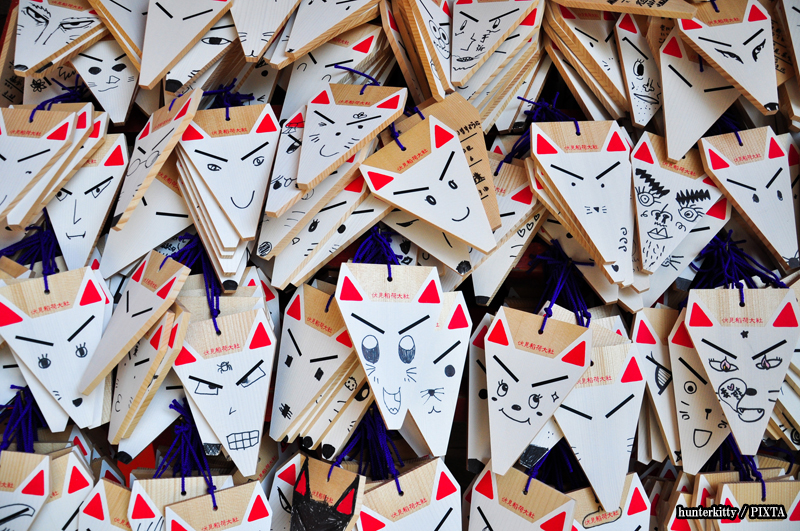
Photo for illustrative purposes
Omikuji: drawing fortunes at the shrine
How omikuji works
Another must-try experience is drawing an omikuji, a random fortune slip that offers insight into your current luck or future path. Here’s how to do it for the main omikuji at Fushimi Inari Taisha Shrine:
- Make an offering of 200 JPY (Japanese currency only).
- Shake the cylindrical box provided until a stick with a number slides out.
- Tell the number to the staff, who will then give you your fortune slip
Omikuji are written in Japanese, but you may be able to determine what it says using an AI tool. The fortunes can be good, bad, or various degrees in between, covering topics such as love, travel, health, and business.
What if you get bad luck?
Don’t worry—bad fortunes are not permanent. It’s customary to fold and tie slips with bad fortunes onto designated wires or tree branches within the shrine grounds. This act symbolically leaves the bad luck behind and prevents it from following you home.
The designated omikuji racks can be found near the main shrine and throughout the trail, often located next to fox statues or small offering boxes.
Cultural etiquette: participating respectfully
Visiting a shrine is more than sightseeing—it’s a chance to engage with a living spiritual tradition. Here are a few tips to ensure respectful participation:
Ritual cleansing
Before approaching the main shrine, cleanse your hands and mouth at the temizuya (purification fountain):
- Take the ladle with your right hand and pour water over your left.
- Switch hands and do the same.
- Pour water into your left hand and rinse your mouth (spitting beside the basin, not in it).
- Rinse the ladle handle last.
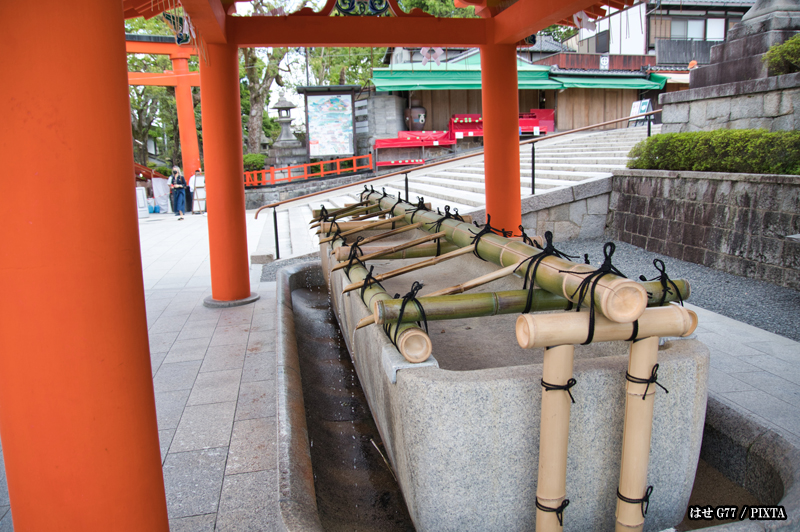
Photo for illustrative purposes
This cleansing ritual prepares you spiritually to enter the sacred space.
Paying your respects
To pay your respects at the main shrine, here is the protocol to follow:
- Bow twice.
- Quietly place a monetary offering (usually a coin) in the box
- Clap twice.
- Pray or make a wish silently
- Bow once more.
Photography
- Allowed: Taking photos of the fox statues, ema, and general shrine grounds is usually permitted.
- Be discreet: Avoid blocking paths or interrupting others in prayer.
- Prohibited areas: Refrain from photographing inside sacred inner halls unless signs explicitly say it’s okay.
Other behavior
Behaving respectfully is key. Don’t film or livestream people without their consent. Don’t play music, sing, dance, perform, or use shrine facilities for purposes other than they were intended. Don’t put anything on top of stone lanterns. Don’t come in wedding dresses or other costumes inappropriate for worship. Don’t fly drones, litter, sit on the ground, smoke or burn fires, or eat and drink in areas not designated for that purpose. Obviously, don’t damage or deface buildings or torii gates.
Visitor information
Access
- Location: Fushimi Inari Taisha, Fushimi Ward, Kyoto
- Nearest station: Short walk from JR Inari Station (5 minutes from Kyoto Station via Nara Line)
- Alternate access: 5-minute walk from Fushimi-Inari Station (7-9 minutes from Gion-Shijo via Keihan Railway Main Line)
Hours and admission
- Opening hours: Open 24 hours, every day
- Main shrine office: Typically open from 8:30 AM to 4:30 PM
- Admission: Free
Best time to visit
- Early morning (6:00 AM – 9:00 AM): For serene atmosphere and ideal lighting
- Late evening: The lantern-lit pathways and shadows cast on fox statues give a mystical ambiance
Time required
- Main grounds and basic rituals: 30-45 minutes
- Full experience (basic rituals, ema, omikuji): About 1 to 1.5 hours
Related article:
If you’re planning to explore beyond the main shrine area and want to experience the full torii trail through the forested mountainside, don’t miss our in-depth hiking guide at “Walking Through Thousands of Torii: The Fushimi Inari Hiking Experience.”
Seasonal tips
- Shōgatsu (New Year): This busy period is when people make their first shrine visit of the new year, known as hatsumōde. Extremely crowded but spiritually significant.
- Spring/autumn : Peak seasons for international tourists—expect crowds but beautiful scenery.
- Rainy days: Offer moody, photogenic shots and fewer people.
Final thoughts
Fushimi Inari Taisha offers more than just a picturesque hike—it’s a gateway into centuries of spiritual belief and cultural practice. Understanding the symbolism of the fox statues, engaging in the personal act of writing a wish, or interpreting your fortune all deepen your visit in meaningful ways. Whether you’re here for spiritual reflection or curious discovery, these traditions connect visitors to the heart of Japanese culture in ways that transcend language
